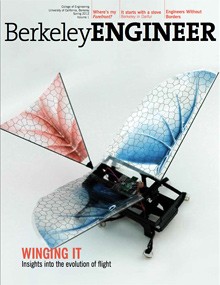Powerboost
Artificial photosynthesis, in which solar energy is converted directly into fuel, may just have gotten an important boost. Peidong Yang, professor of materials science and engineering, and his research team have developed a powerful new approach to designing catalysts for the complex chemical reactions. The researchers successfully integrated two types of interfaces on a single catalyst, resulting in a novel tandem catalyst. This new type of catalyst could be used in multi-step chemical reactions occurring in artificial photosynthesis
Topics: Energy, Materials science

